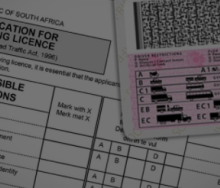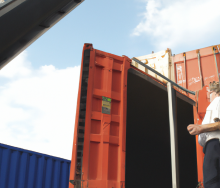Step 1: Do your homework – where to begin
Your European adventure starts with doing your homework. Investigate different markets. Do you sell a physical product? Think about how you will get it there. From a logistical perspective The Netherlands, Belgium and Germany are smart options. These countries are home to the three largest harbours in Europe and have excellent logistical connections to the rest of Europe.
Do you have a digital proposition? Choose the Netherlands as your test country. The Netherlands is among the top EU 28 countries with the highest level of internet access at home. In 2017, 98% of Dutch households had internet access against an 87% European average. So it’s no surprise that, according to reports, Disney is intending to test its streaming service Disney+ in the Netherlands. Even before the US launch!
Europe has 24 official languages. Especially with sales and marketing, it’s essential to communicate in the local language. Don’t have native speaking sales reps yet? Don’t worry, start with a country where English is not a barrier. Such as the Scandinavian countries, UK and The Netherlands.
Local Dynamics
Of course you have to keep logistical and language barriers in mind, but let’s not forget the local market dynamics. Are people interested in your product or service at all? What if you want to sell coffee to Italians? Think twice. It took Starbucks 47 years to open a store in Italy. Italians are very serious about their coffee. They have a deeply rooted culture, especially when it comes to coffee and food. An American giant trying to change their culture will not be welcomed with open arms. Founder of Starbucks Howard Schultz said: “We are coming to Italy with humility and respect to show what we have learned.”
Step 2: Collect facts and figures – define your target group
Time to define your target group! Data is your biggest friend. For example: you want to sell your product to manufacturing companies in Europe. Start with collecting the amount of companies per country. You can get this information for free at local Chambers of Commerce or Eurostat which is the official European Statistics agency. This data will tell you how big your target audience is. For example: there are around three million manufacturing companies in Europe. This is huge, so it might be a good idea to narrow down your target group. A target audience with three million potential customers sounds like fun. But setting up campaigns for millions of companies on whom you also have to follow-up is an expensive and time-consuming job. What about targeting 18.481 manufacturing companies with at least 500 employees in Europe? Or pick your highest priority country. This makes your job a lot more manageable.
Step 3: Is your company ready?
Conquering the European market is very exciting, and you’re thrilled to get started. But are
you ready? Analysing your market gave you an idea of the size of your target group and
marketing costs. But don’t forget that your entire company has to be ready for the extra work. You can’t turn your sales employee into Head of International Sales in one day. And if you want to enter the German market, you have to be prepared to communicate in German. If you don’t have any co-workers who speak the language, it’s time to put your expansion plans on hold.
Step 4: Seduce your target audience
You’ve defined your target group, now it’s time to approach them. Privacy rules vary by country. A B2B email campaign in Sweden or France? No problem. But the rest of Europe is very strict. It’s not allowed to send any type of digital commercial messages (not even a newsletter) here, unless the recipients have given their permission. For instance via an opt-in on your website, social media or congress. Delve into the foreign privacy rules and regulations and adjust your campaign accordingly. Can’t email? Go retro and send a letter by mail or hop on the phone for direct sales.
#TheresmorethanFacebook
Want to reach the b2c-market? Look further than Facebook and Instagram. Often local initiatives are just as popular. Take VK (previously VKontakte), the second largest social network in Europe. VK is very popular in Eastern Europe, namely in Russian speaking countries. Ignoring this site would be a shame if you want to enter the Ukrainian market.
Step 5: Don’t forget to evaluate
Nobody’s perfect and you learn every day. Treat your first international steps as a learning process and always look for ways to improve. Therefore it’s a good idea to divide your target audience into smaller batches. Test your campaign, analyse the results and look for ways to improve. Use these learnings when you enter new markets in Europe. Before you know it, you’re conquering the whole continent!
Prepared by BoldData, European data experts with a database of 42 million European companies.










